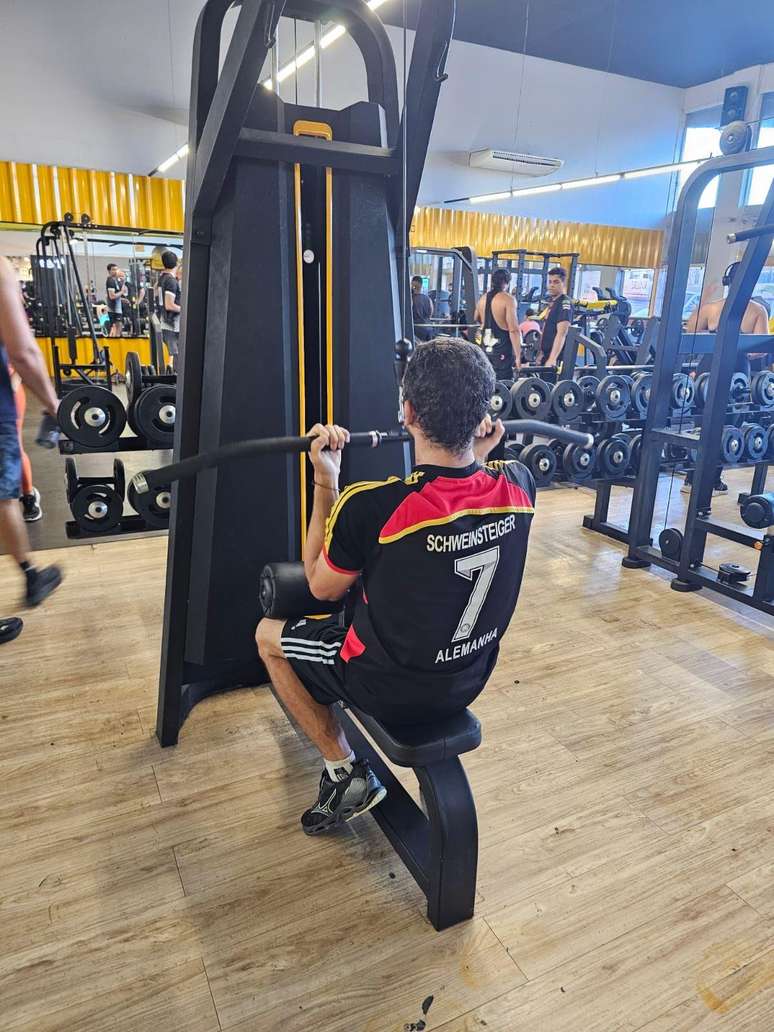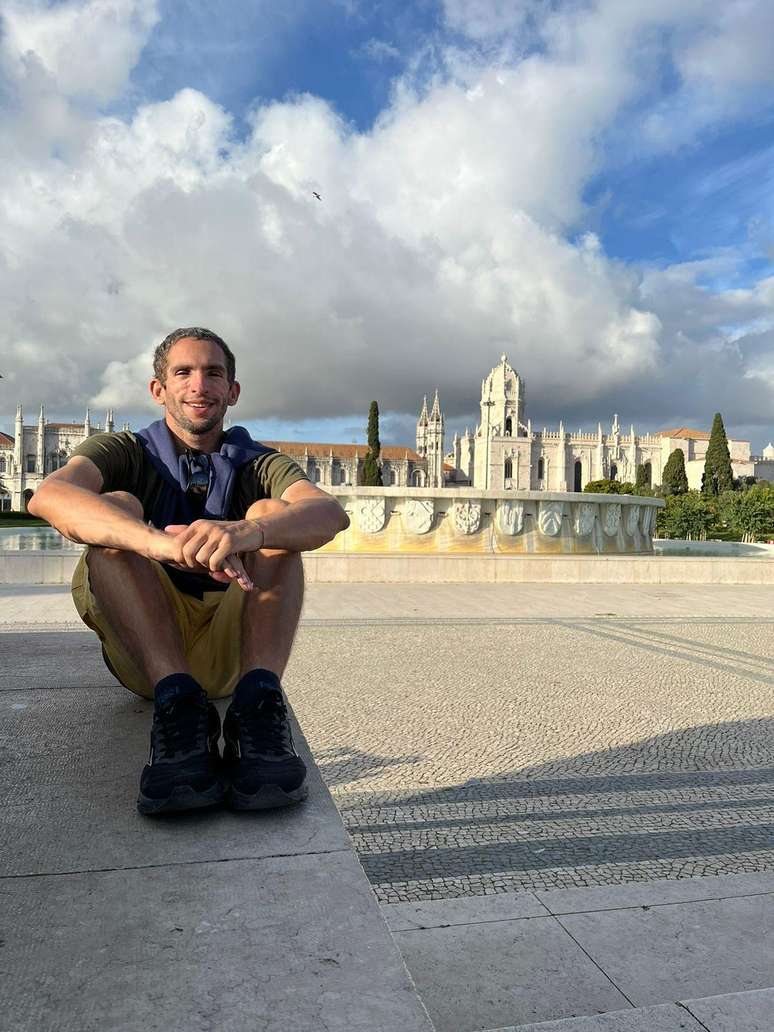Arthur was born with Lipodystrophy, a rare disease that makes the percentage of fat extremely low, but brings challenges similar to those of obesity
Artur de Medeiros Queiroz was born with very few fat cells in the body. Today, at the age of 34, it has a percentage of body fat similar to that of high -performance athletes.
It may also seem something desirable for many people, but Arthur’s body composition was caused by a genetic mutation that, in practice, meant a rigorous dietary life and constant concern for health.
The image of Artur, with an estimated diagnosis every 1 million people – is called Berardinelli syndrome or generalized congenital lipod scene.
Although the condition has characteristics opposite to those of obesity, the consequences of the lipod scene are, curiously, similar to the problems brought by excess fat: metabolic deregulation and risk of different diseases.
For those who have the condition, there are no adipocytes – cells that store fat – enough and excess ends up accumulating in the bloodstream.
“Through blood circulation, this fat can be deposited in other organs such as liver, pancreas and muscles. And if it ends up accumulating in the blood vessels, leads to the inflammation of the pancreas [pancreatite]accumulation of fat in the liver [esteatose hepática] And other serious metabolic commitments, “explains Juliane Campos, professor to UFRN (Federal University of Rio Grande Do Norte) and specialist in biology of the adipose tissue.
Depending on the genetic mutation involved and the severity of the condition, people with syndrome can also have complications in different body systems, such as heart and respiratory changes, hormonal dysfunctions that affect puberty and fertility, kidney problems, manifestations in the skin and, in some cases, neurological changes.
Another common consequence is the lack of satiety, aggravated by limiting the amount of food that these people can consume, in particular those containing fats.
This is because leptin, a hormone that signals the brain when we are satisfied, is produced by fat cells, very small in these patients.
The importance of early diagnosis
Born in Caicó, in the Seridó region, in Rio Grande do Norte, Arthur received the diagnosis in advance.
“Still small, the physical characteristics of the painting were already very visible, although they are often confused with a malnourished person, and many doctors do not yet know the syndrome. But my maternal grandmother had a son with this syndrome, which facilitated the diagnosis for me.”
But discovering the disease still in childhood has also brought emotional challenges to Arthur.
“My mother sold snacks and I wanted to eat a lot – it is difficult to understand the restriction when we are children. Everything for” healthy “was forbidden for me. My snack at school was always the same: apple, banana and grapes.”
“At school, I even hid the money from the snack of my friends just not to see them eat delicacies.
Arthur cannot consume any quantity of alcohol, since his liver had the “abnormal” function of the metabolization of fats, which made the consumption of these substances an easy overload for the organ.
“It was not something I wanted to do anyway, but in his youth, he made me” excluded “and respectable as an anti -ocial.”
He had psychological support for years and also had speech therapy and physiotherapy.
“I had difficulties of language, sometimes stammering or exchanged texts and also difficulty walking, I have always gone to the tip. And my life has improved a lot when you take care of my mental health. Follow me that helped me strengthen and create defense mechanisms to face the adversities of life, such as prejudice and discrimination, I have always suffered from school and outside it.”
According to Arthur, women often suffer even more prejudices due to the appearance that Lipodystrophy gives.
“Nowadays, I have no longer crossed discrimination as in childhood. But women still face much more. Since we don’t have fat, the body ends up becoming more muscular, with a scheme that is often seen as more masculinized. And people still have an idealized image of a female body.
In recent years, Arthur has developed diabetes, but the maintenance of foods regulated for most of its time has avoided more serious complications. It describes the need to consume only what is healthy in survival.
“There are people with Lipodystrophy who, still very young, who already face serious problems, such as diabetes, must take insulin and can also have complications in the liver, in cirrhosis or in the kidneys, many need hemodialysis. In my case, I have always been able to control well.”
The constant practice of physical exercise is also part of Arthur’s care routine and is essential for those who have the diagnosis.
Staying active help in insulin sensitivity, since during physical activity muscle cells increase the capture of glucose without the need for insulin, making the body more efficient in the use of blood sugar, which reduces insulin resistance and reduces the risk of type 2 diabetes.
In addition, exercise contributes to the control of blood fat levels, the increase in HDL (good cholesterol) and the reduction of triglycerides and LDL (bad cholesterol), which reduces the risk of cardiovascular diseases.
For those with lipod scene, exercise is also particularly important because it helps to reduce visceral fat, which is the fat accumulated around internal organs such as liver and pancreas, which is directly linked to the risk of metabolic and cardiovascular diseases.

‘Lean Disease’: the origin of generalized congenital lipodystrofia
The syndrome was baptized in honor of the Paulist endocrinologist Waldemar Berardinelli, who described the disease for the first time in 1954.
Although further research has emerged since then, its low impact makes it still unknown quite unknown in Brazil.
Lipodystrophy has genetic origin and, so that the syndrome manifests itself, a gene must necessarily be inherited with the mutation of both the mother and the father.
This means that if parents are relatives and share the same genetic inheritance, it is the possibility of transmitting the mutated gene – and the syndrome occurs in children – increases considerably.
This is the reason why, in some regions, the cases of illness are associated with consanguineous weddings, such as cousins.
In Rio Grande do Norte, a study conducted in collaboration between UFRN and the current Brazilian association of people with Berardinelli and other lipodicolose syndrome (ABST) (ABST) has about 44 living people with the picture, which represents a prevalence of 32.3 cases of inhabitants – significantly higher than the world average, which is a case of breeding.
Portuguese colonization played an important role in the emergence of syndrome in the region, due to a phenomenon known as “founder effect”.
According to a book on the theme produced by Professor Julliane Campos and other UFRN researchers, the first inhabitants of Seridó, around 1720, were Portuguese from northern Portugal and the Azores.
Once established, these families began to marry, which at the time was common as a way to maintain wealth within the family group itself.
This high rate of relatives marriages caused the spread of genetic changes in some individuals, contributing to the permanence and spread of mutations associated with lipodiestrophy.
Families also originated in other states such as Paraíba, Pernambuco, Ceará and Minas Gerais.
There are different forms of lipodystrophy. According to Professor Julliane Campos, in a widespread form, which is the most serious, patients may have changes in a maximum of four genes related to metabolism, or genes that regulate the formation of adipocytes or the elaboration of fats.
“What these cases have in common is that with changed genes there is a failure in the formation of fat cells. Therefore, these individuals are born with a reduced amount of these adipocytes.”
Treatment options with lipodystrophy
There is still no treatment that provides a complete cure of the syndrome, just as there is no diet that can reverse lipodiestrophy.
The treatment focuses on the control of metabolic changes such as glycemic control, the management of complications and the improvement of the quality of life.
“Treatment tries to treat some of the factors caused by the disease, such as diabetes and cardiovascular problems, but not the disease itself. So we insist so much on the importance of early diagnosis, especially for rare diseases, in which the drugs are very expensive. Starting from the beginning it is what prevents serious complications”, says Campos.
The teacher explains that there is only one drug approved for the specific treatment of lipod stage, which is analogous to leptin, or a synthetic substance that imitates the action of the hormone responsible for appetite.
“It is called Metereleptina and has been approved in Brazil in 2023. We are waiting for it to be released for a wide use in health conditions, but for now only a few patients have access to this medicine.”
Arthur had access to the drug in 2016 through a cause.
“At the time, medicine was not recognized by Anvisa and was very expensive: a dose costs more than $ 2,000. The process was not simple. I crossed an experience in Brazilia and I had to argue that the drug would bring me good results. Unfortunately, not all patients received this treatment.”
“I have a good life and thanks for this”

Arthur says that although the condition requires constant attention and can lead to serious if not controlled paintings, it leads an active and independent life.
“I have no limits. I live alone, I travel frequently. Of course these activities require care – and care will always be needed – but I can say that I take a very good life and I am grateful to it.”
Today, Arthur is a public employee, has a good compensation and claims not to face difficulty living independently. He is also attending a doctorate in education, science and mathematics at the Federal University of Paraná and seizes the opportunity to travel, his favorite activity, whenever he can.
“Last year, through the doctorate, I had the opportunity to exchange and I spent six months in Portugal. It was a dream. I was far from everything: my family, my doctors, but, thank God, I didn’t sick,” he says.
He says that he hopes that the disease will become better and that the diagnoses will be increasingly assertive and performed previously and previously – a way to improve the quality of life of patients and make what is “different” more recognized.
Source: Terra
Ben Stock is a lifestyle journalist and author at Gossipify. He writes about topics such as health, wellness, travel, food and home decor. He provides practical advice and inspiration to improve well-being, keeps readers up to date with latest lifestyle news and trends, known for his engaging writing style, in-depth analysis and unique perspectives.








![Everything here starts in advance: VIC danger? … What are you waiting for from April 21, 2025 to 25 to 25 [SPOILERS] Everything here starts in advance: VIC danger? … What are you waiting for from April 21, 2025 to 25 to 25 [SPOILERS]](https://fr.web.img4.acsta.net/img/7f/96/7f960c8ef6f1874bfdc0aaeedaa241dc.jpg)
